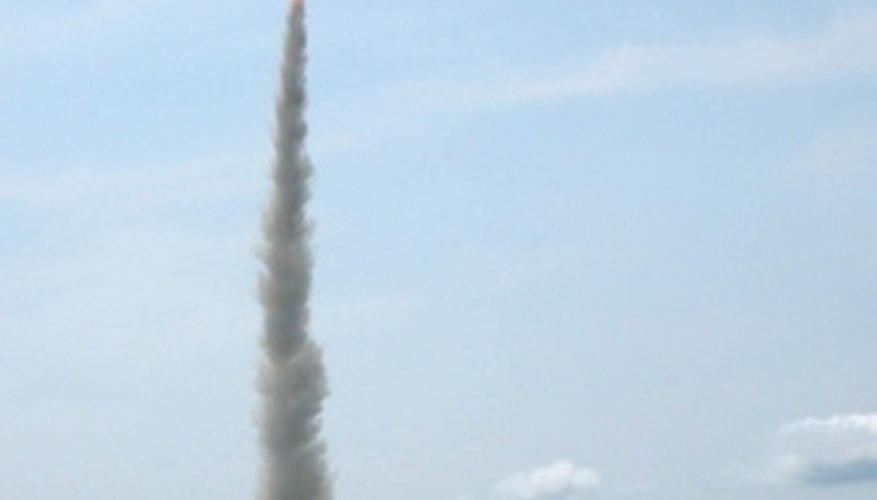The cone on the nose, or front end, of a rocket has a considerable impact on a rocket's aerodynamic profile and thus its flight performance. While the simplest of shapes are enough to lessen the drag on the craft, putting more effort into the design of a more complex shape of nosecone is rewarded with improved flight. For subsonic flight, the most efficient type of cone is a parabolic-curved shape. Since water rockets do not travel any faster than the speed of sound, this is the ideal choice for the design of your craft.
- The cone on the nose, or front end, of a rocket has a considerable impact on a rocket's aerodynamic profile and thus its flight performance.
- While the simplest of shapes are enough to lessen the drag on the craft, putting more effort into the design of a more complex shape of nosecone is rewarded with improved flight.
Cut a mould out of styrofoam with a hobby knife in the shape of the parabolic cone you desire, but slightly smaller.
Take a 2L bottle (similar to the kind used in your water rocket) and cut a 1/2-inch-wide ring from the sides of it to form a plastic sleeve.
Take a sheet of newspaper and examine it to find which direction the "grain" and fibres in it run. Tear the sheet into narrow strips less than 2cm wide, and repeat with several more sheets.
Tear these strips into segments measuring roughly 6 to 8 inches long.
Dilute a small amount of white school glue in a mixture of five parts water to one part glue.
Use a small paintbrush to apply a little of your glue mixture to the surface of the styrofoam mould, then lay a strip of paper on it along the nosecone's length. Paint more glue mix on it until the strip is completely soaked, then repeat until the entire mould has been covered.
Once one layer has been glued in place, allow it to dry.
When the cone is dry, sand it lightly and gently with fine sandpaper to smooth edges and help successive layers to adhere.
Apply another layer of painted glue mixture and paper, this time with the strips canted to a slight angle. Allow to dry and sand once more.
- Tear these strips into segments measuring roughly 6 to 8 inches long.
- Apply another layer of painted glue mixture and paper, this time with the strips canted to a slight angle.
Continue to add more layers, each time applying the paper strips at a different angle and drying and sanding in-between applications.
When you are satisfied with the strength of your nosecone, allow it to dry in a warm and dry place.
Apply a coating of waterproof paint to prevent spray from the rocket from dissolving the nosecone.
TIP
A hollow can be cut out of the styrofoam inside of the nosecone to make a small compartment for a parachute or other payload.
